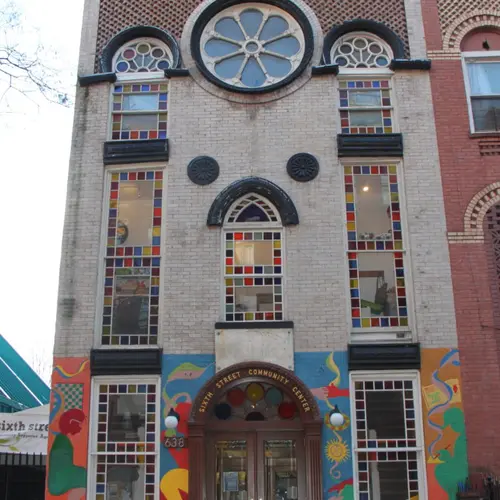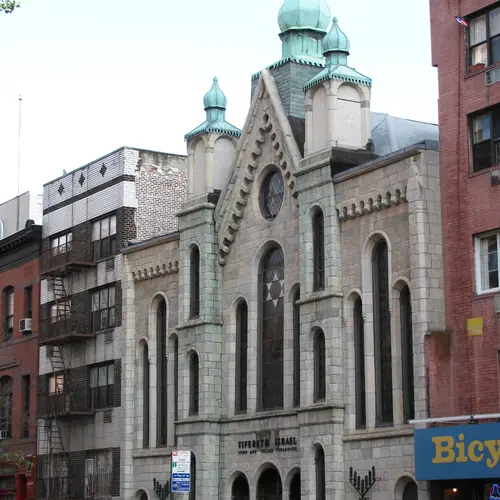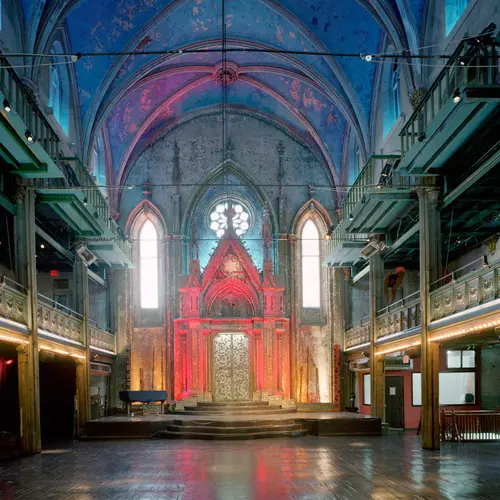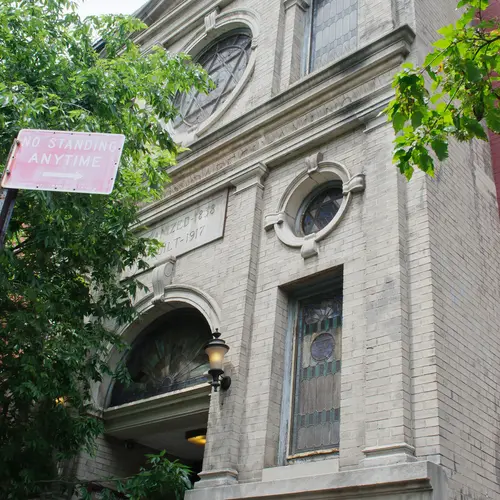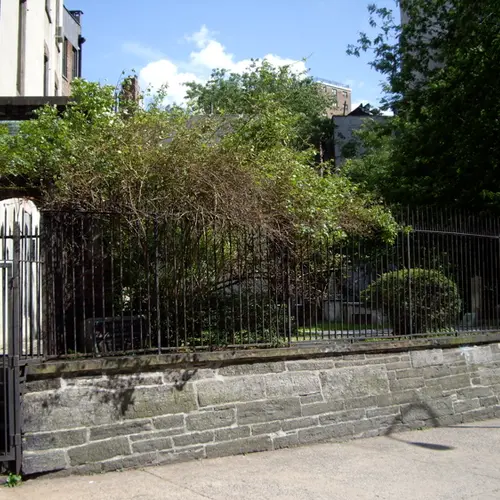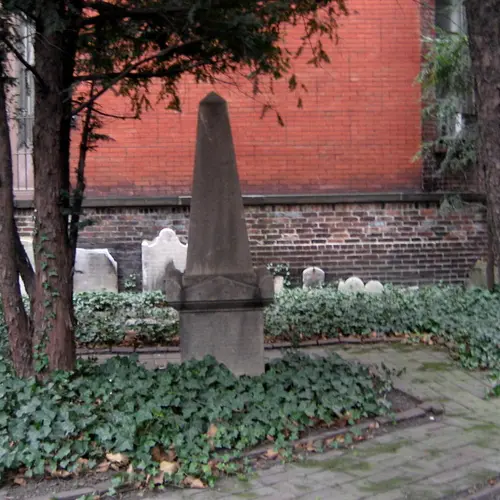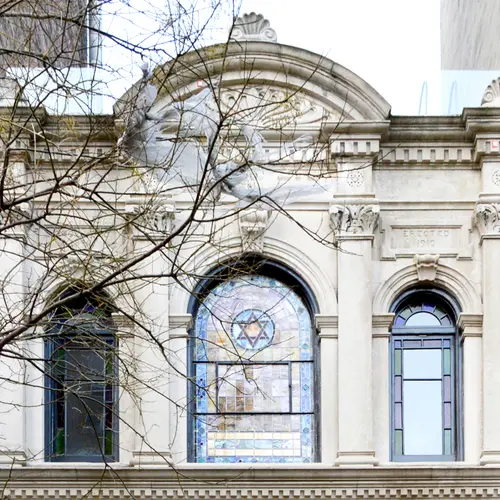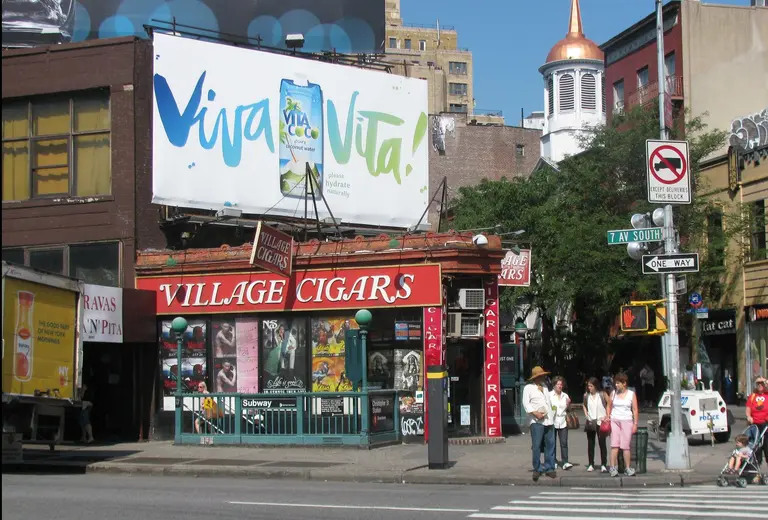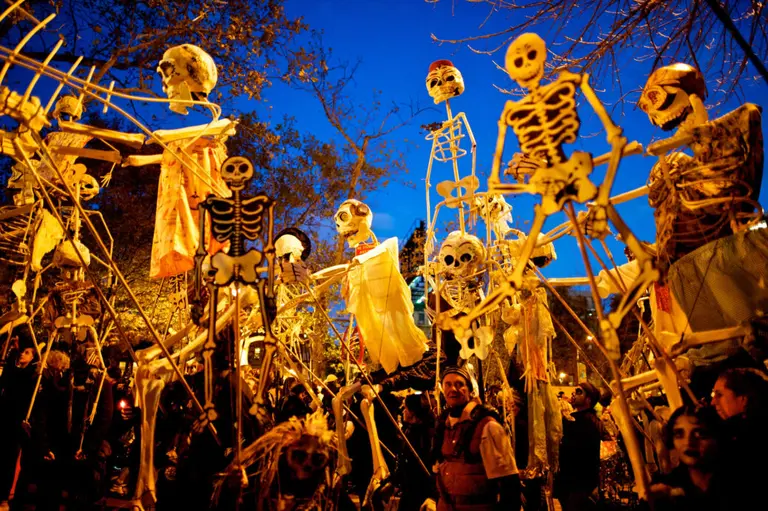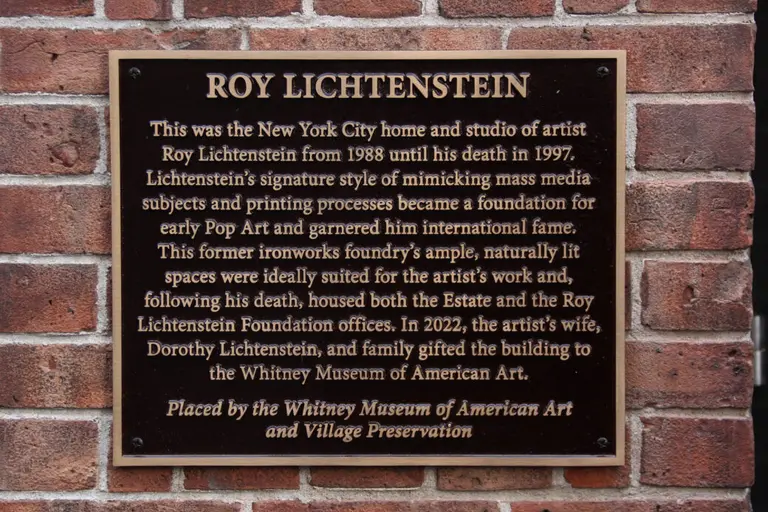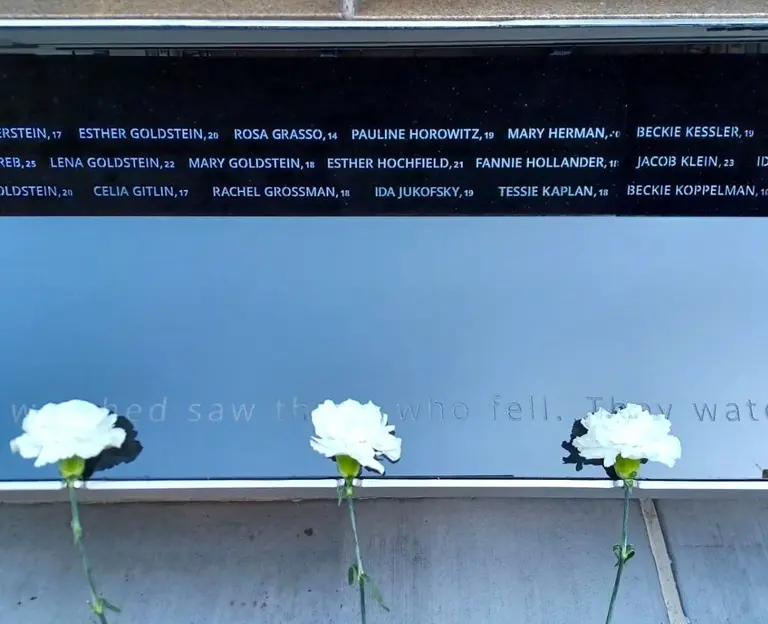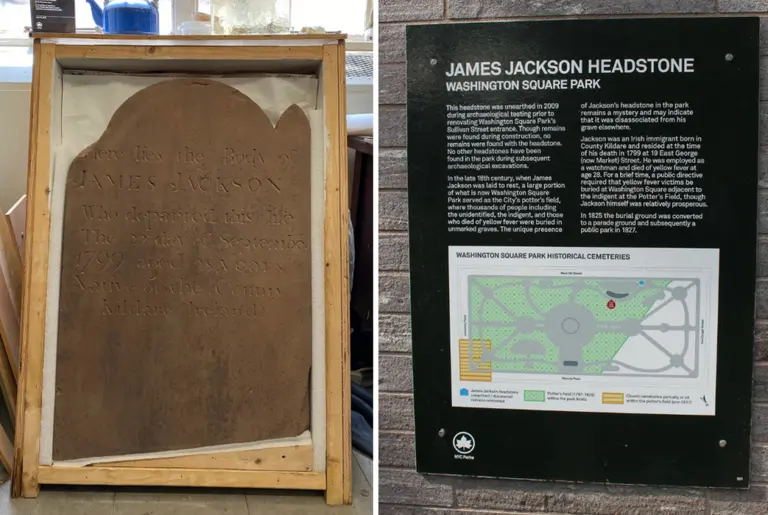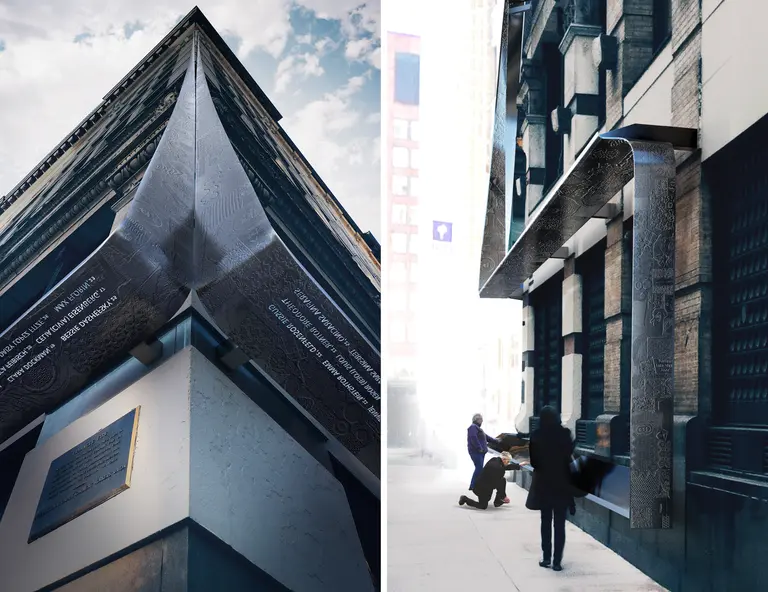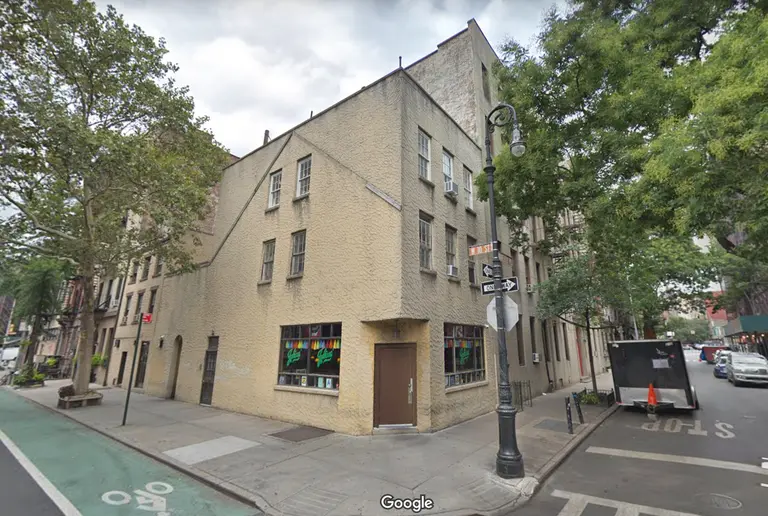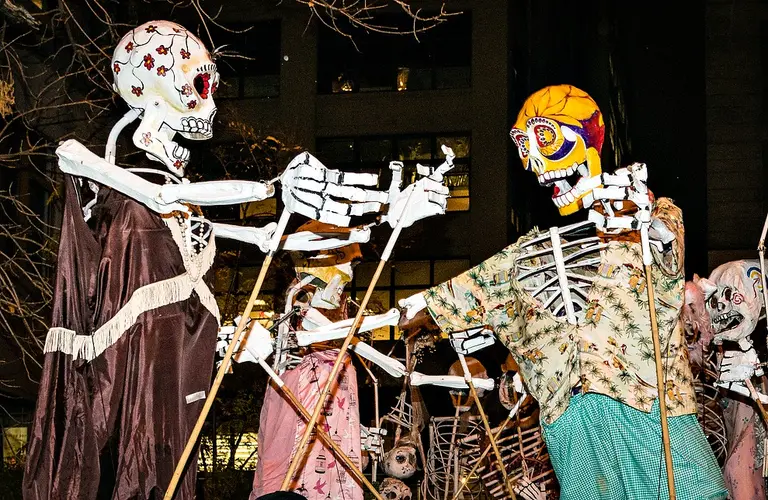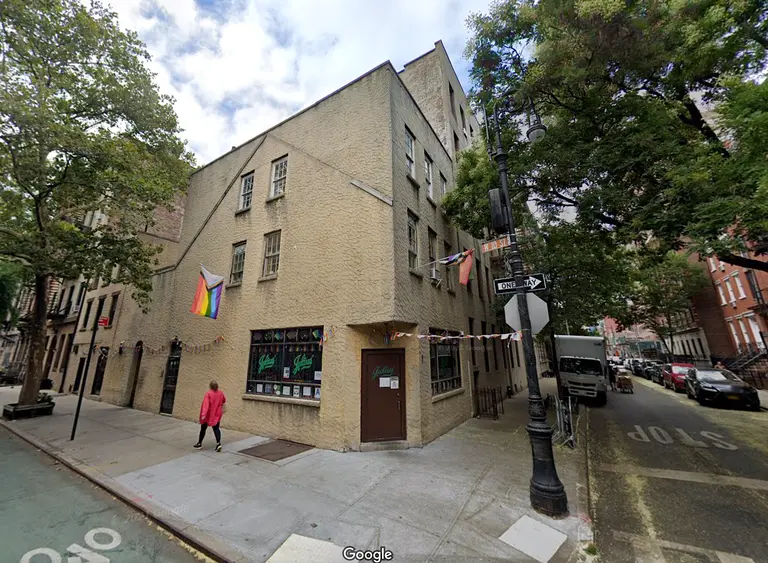Uncovering the stories behind downtown’s overlooked synagogues
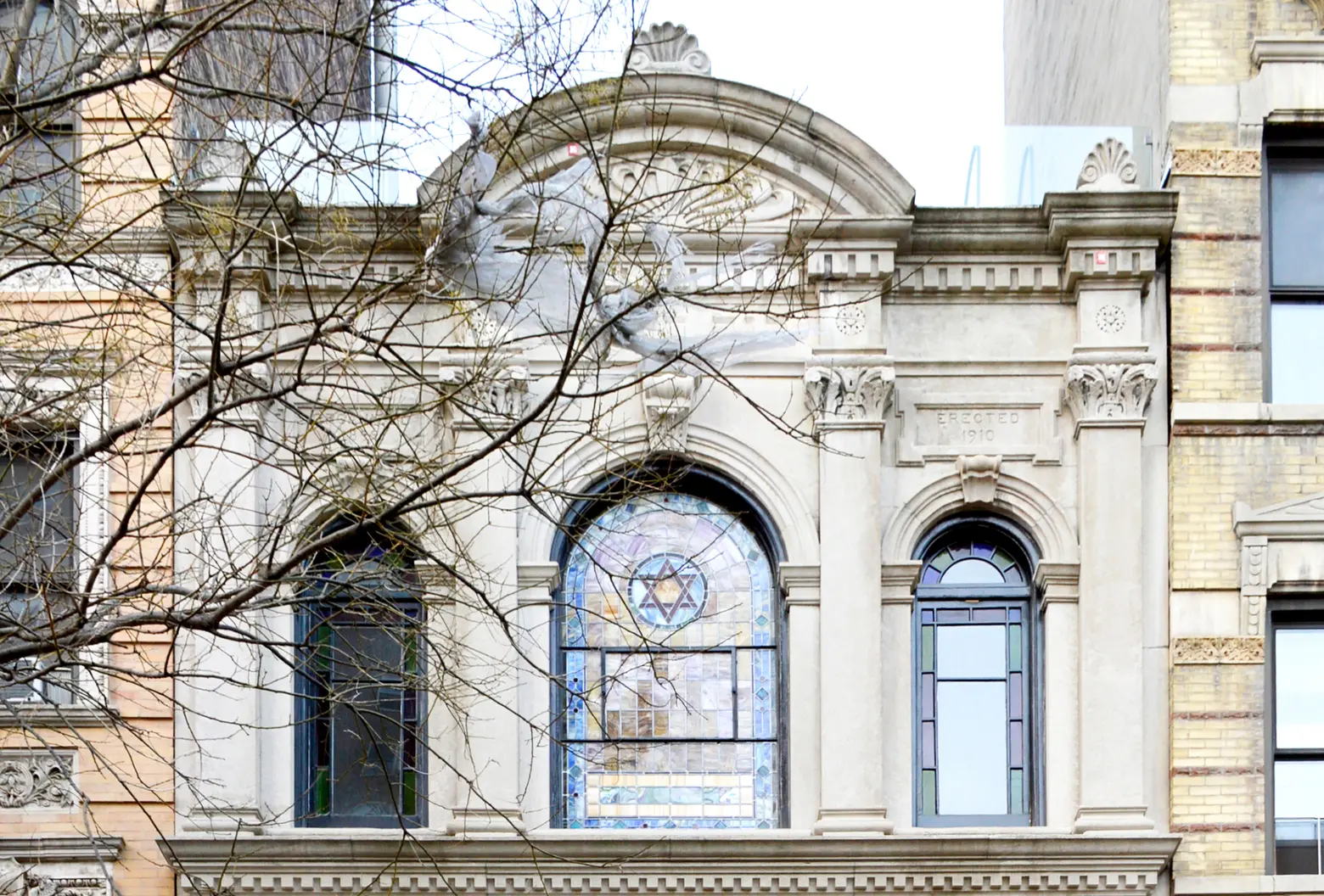
On August 8, 2008, Village Preservation and the East Village Community Coalition (EVCC) submitted a request to the LPC to landmark a little-known but remarkable survivor– Congregation Mezritch Synagogue at 515 East 6th Street between 1st Avenue and Avenue A. The building was the last operating “tenement synagogue” in the East Village. A young, little-known developer named Jared Kushner was planning to tear it down and replace it with condos and a new space for the tiny congregation, which had operated out of the building since 1910.
The story has a (relatively) happy ending – the synagogue and much of its surroundings were landmarked in 2012, and the demolition plan was dropped. But unlike the deservedly beloved and celebrated Eldridge Street Synagogue, now a National Historic Landmark, Mezritch is one of several unique but in many cases overlooked historic synagogues still standing in and around Greenwich Village, the East Village, and the Lower East Side, which in the early 20th century contained what was by many accounts the largest Jewish community in the world. Ahead, we take a look at the history of seven of them and what makes them so unique.
1. Adas Yisroel Anshe Mezritch Synagogue, 415 East 6th Street
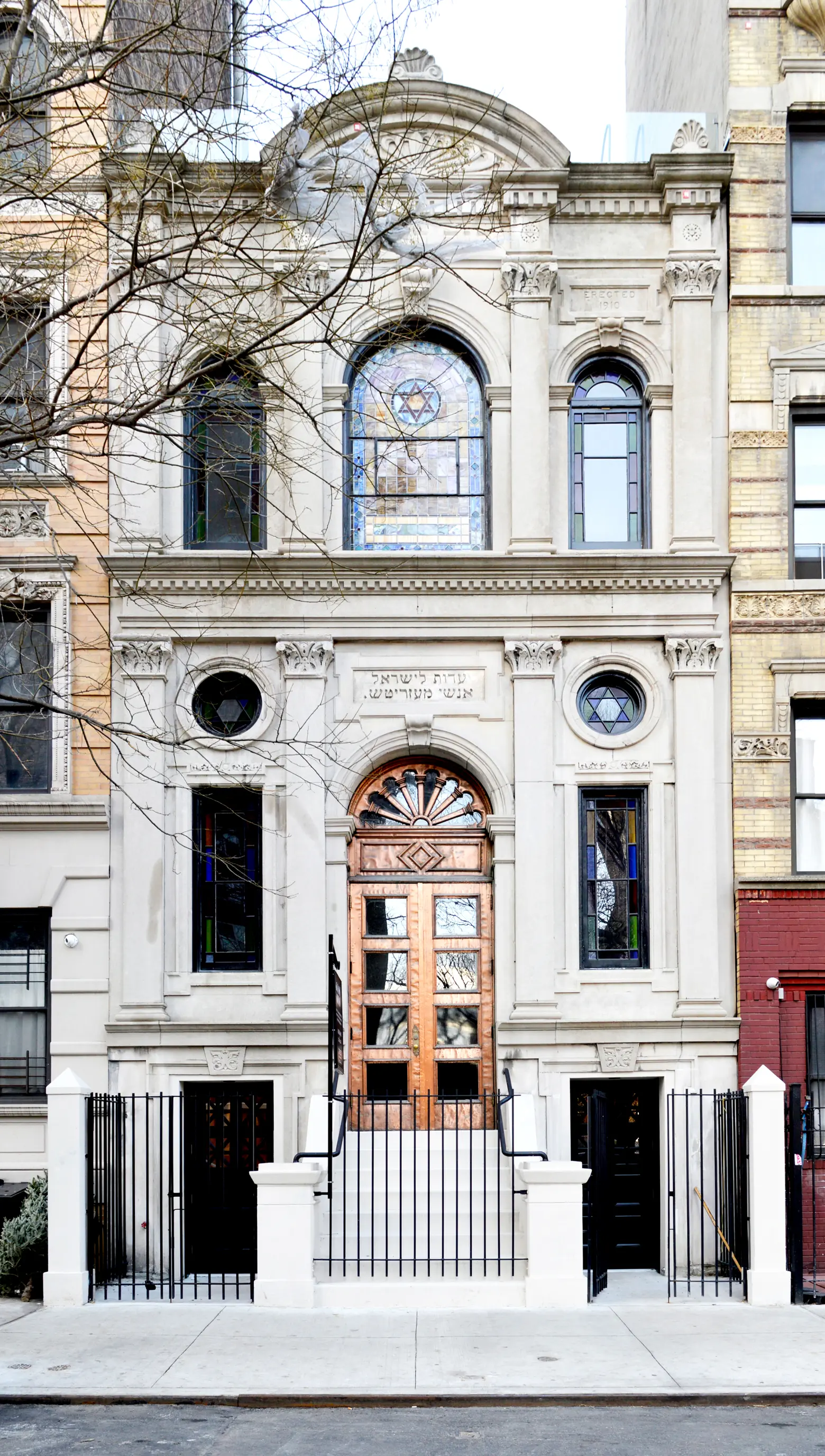 Mezritch Synagogue today, via Wiki Commons
Mezritch Synagogue today, via Wiki Commons
Built for a Polish-Jewish Congregation founded on the Lower East Side in 1888, the temple beautifully defines the “tenement synagogue.” Sandwiched between actual tenements, it fits on a narrow 22-foot wide lot which would have otherwise been filled by a tenement and served the largely poor, immigrant, tenement-dwelling residents of the surrounding community. In fact, the building with its impressive neo-classical façade is actually a 1910 alteration of a small 19th-century residential structure originally built on the site.
By 2008, the Congregation had dwindled considerably, and every other tenement synagogue in the East Village had been demolished, abandoned, or converted to another use. In a controversial move, the congregation leadership voted to partner with Kushner Companies to tear down the century-old structure and replace it with a new condo development with space for the shul inside. But several members of the congregation objected to the plan, as did several Lower East Side Jewish groups, who banded together with Village Preservation and EVCC to save the building. The synagogue and several other historic structures were included in the 2012 East Village/Lower East Side Historic District (pdf). Not long after, the tiny congregation voted to partner with a developer to turn the upper floors of the structure into residences to provide income for the congregation, which now operates out of the building’s basement.
2. Community Synagogue Max D. Raiskin Center, 323-327 East 6th Street
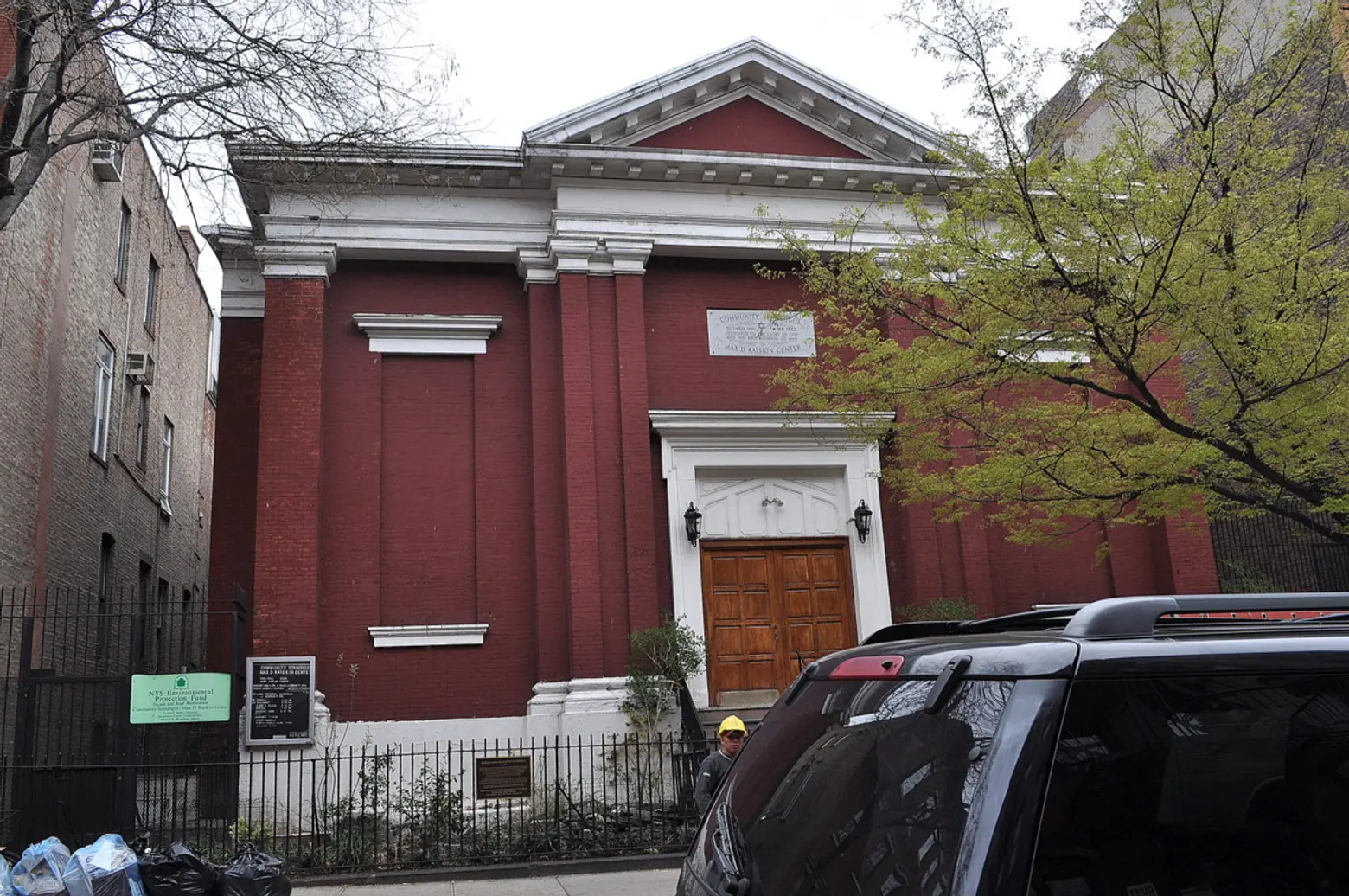
Photo via Village Preservation
Just a block west of Mezritch Synagogue lies the East Village’s largest functioning synagogue in its oldest building. What’s now known as the Community Synagogue has actually been a synagogue for less than half its lifetime. It was built in 1847 as the Evangelical Lutheran Church of St. Matthew for Dutch, German and English Lutherans. In 1857 it became home to the German Evangelical Lutheran Church of St. Mark, established to serve the East Village’s burgeoning German-American community.
And then in 1904, tragedy struck when nearly 1,000 of its congregants were lost as the sinking of the General Slocum became one of the most devastating tragedies in New York City history – the worst maritime disaster until the sinking of the Titanic and the greatest loss of civilian life in New York until September 11th. This, along with anti-German animus during and after World War I, led to the dissolution of the East Village’s Kleindeutschland, what was once the largest German-speaking community outside of Berlin and Vienna. Finally, in 1940, after considerable German out-migration and a flood of Jewish immigrants to the neighborhood, the church was converted to a synagogue.
Nearly 80 years later, the congregation remains vibrant and active, not only maintaining a range of Jewish cultural and religious activities but maintaining the on-site memorial to the victims of the General Slocum who were largely members of the prior incarnation of the building’s congregation. In 2012, it was included in the East Village/Lower East Side Historic District along with Mezritch.
3. Congregation Ahawath Yeshurun Shara Torah, 638 East 6th Street
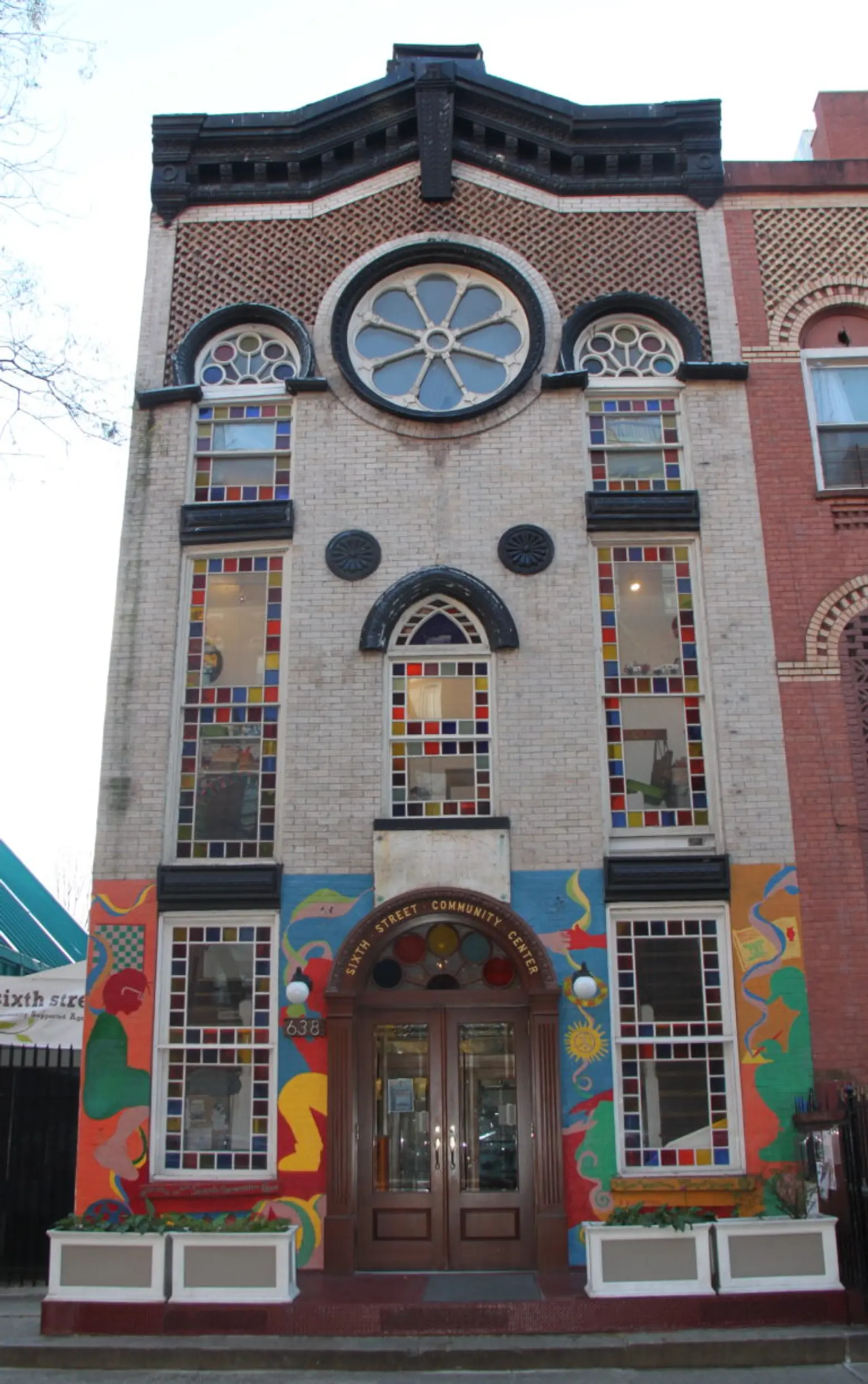 Photo via Village Preservation
Photo via Village Preservation
Two blocks east of Mezritch Synagogue between Avenues B and C lies another tenement synagogue, this one entirely repurposed in the 1970s. Congregation Ayawah Yeshurun was housed in a building constructed in 1889 to the designs of Calvert Vaux, the noted architect of Central Park and the Jefferson Market Courthouse (now library). In 1905, it became a synagogue serving a congregation from the town of Munkatsch, then in the Austro-Hungarian Empire and now in Ukraine. Much of the building’s ornamentation, as well as the surviving Hebrew lettering in the stone tablet over the entrance, date from that era.
By 1977, the historic synagogue was surrounded by abandoned buildings and vacant lots and was itself abandoned. It was taken over by the Sixth Street Community Center, a key figure in the local community garden movement which provides food, health, and educational assistance, and runs a Community Supported Agriculture (CSA) network.
4. Congregation Tifereth Israel Town & Village Synagogue, 334-336 East 14th Street
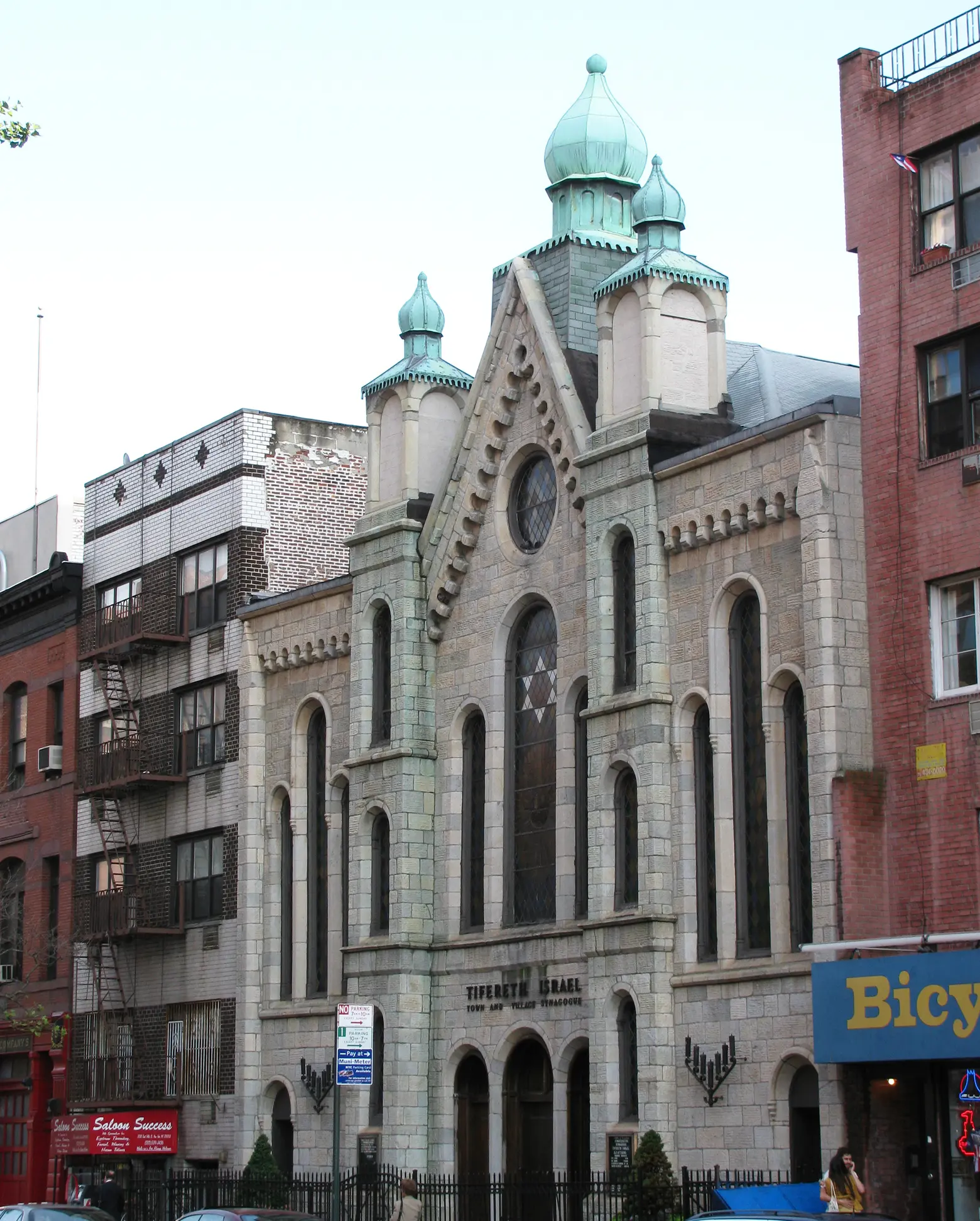 Photo via Flickr cc
Photo via Flickr cc
The East Village tradition of synagogues located in shape- and faith-shifting structures continues with this grand edifice located east of 1st Avenue. Built in 1866 in the Rundbogenstil (or “round arch”) style, which drew on German and northern Italian precedents and was popular in lands of the German diaspora, it originally served as the First German Baptist Church. However, by 1926, reflecting the shifting demographics of the neighborhood, it became the Ukrainian Autocephalic Orthodox Church of St. Volodymyr, which added the onion domes to the façade around 1940. In this incarnation, it was one of the most important Ukrainian churches in North America, site of the installation of Joseph A. Zuk as Bishop of the Ukrainian Orthodox Church in America in 1932 and the unification of the Autocephalic Ukrainian Orthodox Church of the United States of America and Ukrainian Orthodox Church in America in 1950.
But the demographic winds shifted again after World War II, especially with the construction of the massive Stuyvesant Town and Peter Cooper Village across the street in 1947. By 1962, it had become Congregation Tifereth Israel, also known as the Town & Village Synagogue for its connection to Stuyvesant Town and Peter Cooper Village, which added the Star of David, menorahs, and other Jewish elements to the façade that remain today. The congregation has thrived here for the last half-century.
In 1966, the building was considered by the city for landmark designation, but the proposal was never approved or denied and remained in “landmarks limbo” for nearly 50 years. In 2013, the congregation advertised the building for sale, contemplating developing the site. After successful advocacy efforts, it was landmarked in 2014.
5. Former Congregation Ansche Chesed/now Angel Orensanz Center, 172 Norfolk Street
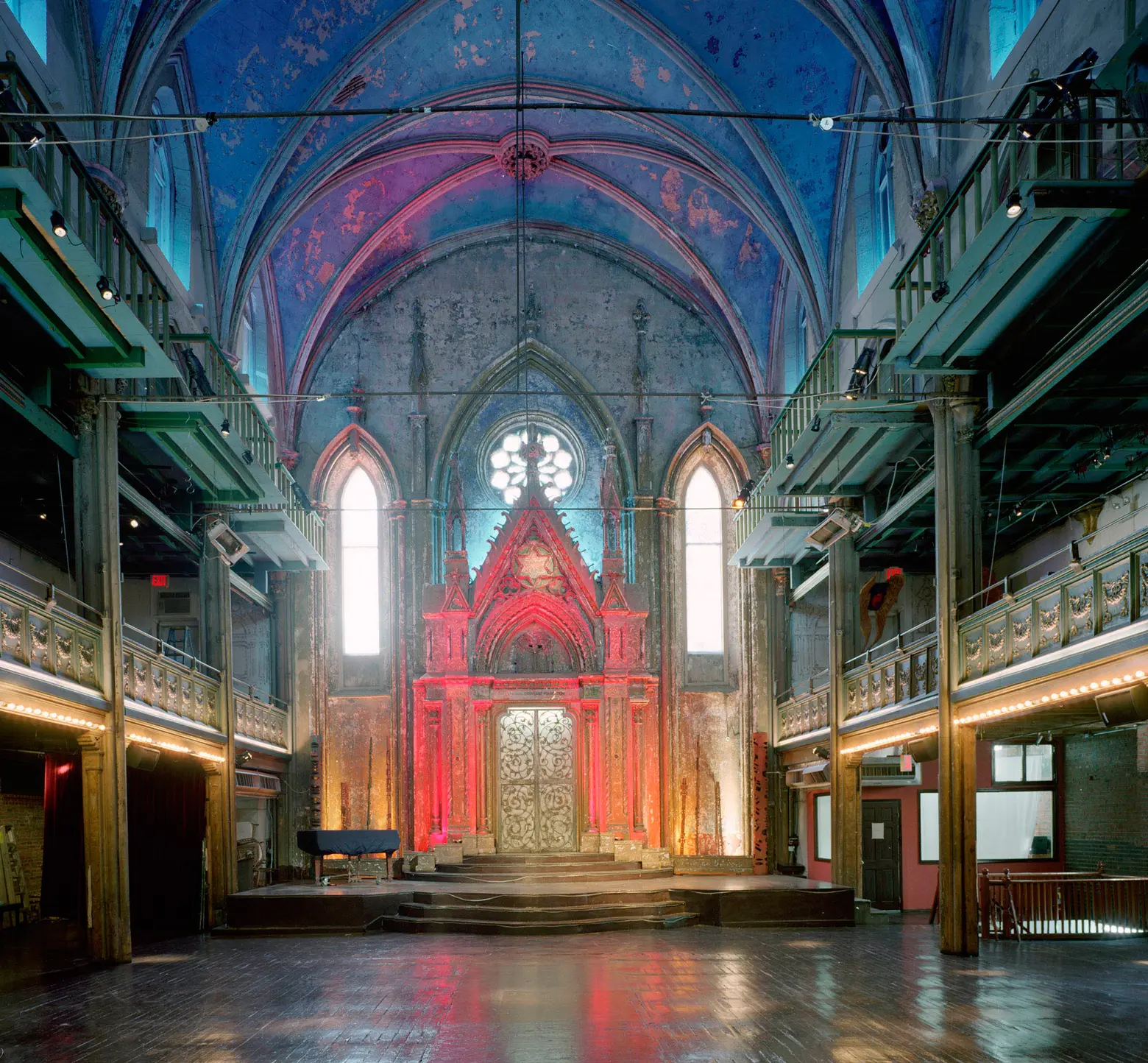 Photo via Flickr cc
Photo via Flickr cc
A half-block below Houston Street lies the oldest surviving synagogue building in New York State and the fourth-oldest surviving synagogue building in the country. It was built in 1849 by a congregation of largely German Jews founded in 1825, only the third Jewish congregation established in New York City. At the time of its construction, it was the largest synagogue in the United States, and the rare one built in the Gothic Revival style so strongly associated with Christendom. Its grand interior was meant to resemble Notre Dame in Paris, while its sanctuary was modeled on the Sistine Chapel.
As Jews of the Lower East Side moved up the economic ladder, they also tended to move uptown, and Congregation Ansche Chesed did the same. The synagogue was taken over by a successive wave of more recently-arrived Jewish immigrants from Hungary and Belarus among other places. By 1974, however, membership in the last congregation had dwindled, and the building was abandoned and vandalized.
In 1981, the City took over the building, and it was eventually sold to Spanish Jewish artist Angel Orensanz, whose eponymous foundation transformed the building into a Center for the Arts. The building now holds services by the Shul of New York, a reform congregation, and has been the setting for performances and work by Andres Serrano, Mandy Patinkin, Elie Wiesel, Maya Angelou, Arthur Miller, Philip Glass, Whitney Houston, Mariah Carey, and Avril Lavigne. Sarah Jessica Parker and Matthew Broderick were married there in 1997, and the interior was used as the backdrop for the cover art for the Wu-Tang Clan’s 1993 album “Enter the Wu-Tang (36 Chambers).”
6. Congregation Darech Amuno, 53 Charles Street
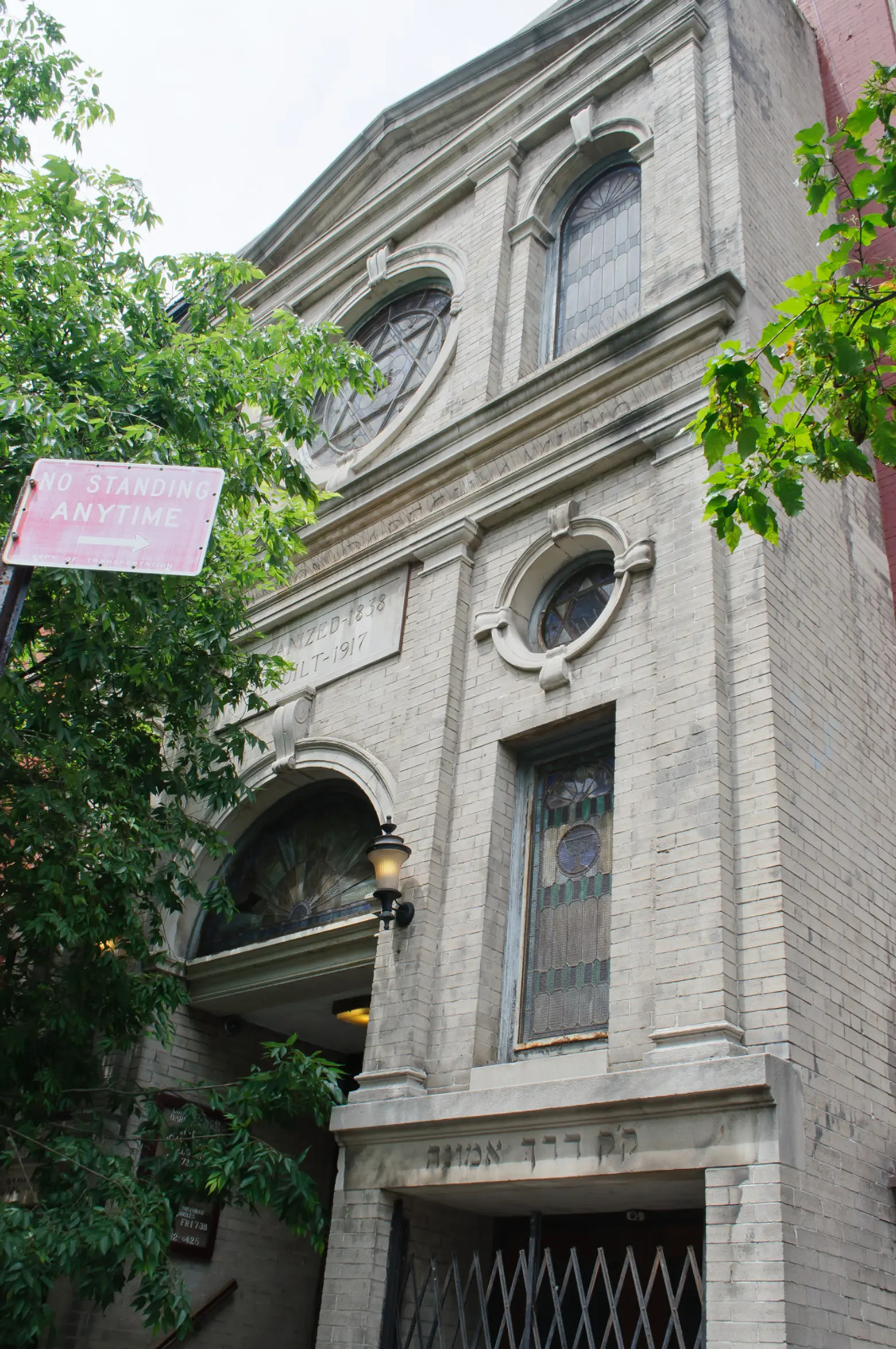 Photo via Wiki Commons
Photo via Wiki Commons
This often-overlooked West Village gem blends in so well with its charming rowhouse neighbors in part because it was once a rowhouse itself, converted into a synagogue in 1917 with a modestly-proportioned but grandly-detailed neo-Classical façade. While the building’s current incarnation is only a little over a century old, the congregation that established it and remains there today was founded in 1838, making it one of the oldest Jewish congregations in New York. Adding to its distinction, the original congregation consisted largely of Dutch Jews.
Darech Amuno has a few other noteworthy distinguishing characteristics. Though they have stayed put for the last 102 years, since their founding this is at least the ninth home of the congregation, making them the proverbial wandering Jews of Greenwich Village, where each of their prior homes was located. In fact, for decades they were the only synagogue in the neighborhood. Among the few buildings in which they were once located that survives in some form today is the IFC Film Center on Sixth Avenue and 3rd Street, which for most of the 19th century was a church but briefly in the late 19th century housed this congregation.
The congregation has a noteworthy history in other respects, too. From 1866 to at least 1901, the Free Burial Fund Society the congregation ran buried all of the city’s Jewish poor who could not afford burials (of which there were many); records indicated they took care of the burials of well over 10,000 persons during that time. Another distinction: in 1864 it was one of the city’s congregations which banded together to form the “Hebrew Free School” to provide free Hebrew education to children in New York City. The move was sparked by a Christian missionary organization which began offering free Hebrew education to Jewish children as a means to seek to convert them to Christianity. The first Hebrew Free School was located in a no longer extant building on Avenue C, while the second was housed by Darech Amuno in their synagogue, then located at 164 Greene Street (demolished).
These days, the still-active synagogue is perhaps best known to the outside world for hosting regular performances by noted Klezmer clarinetist and Bluegrass mandolinist Andy Statman.
7. First and Second Cemeteries of the Spanish and Portuguese Synagogue Shearith Israel, 55 St. James Place and 71 West 11th Street
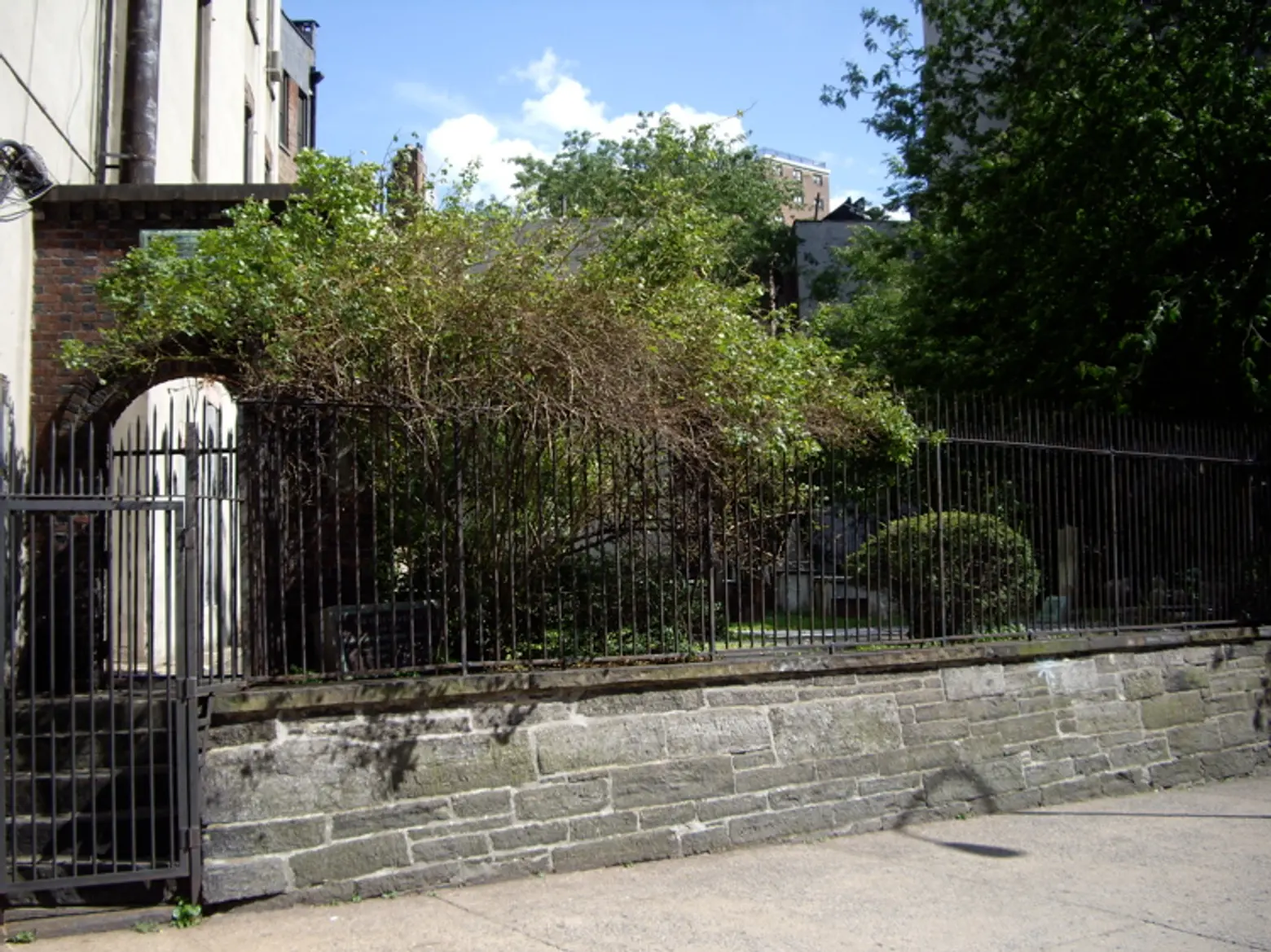 First Shearith Israel Cemetery, via Wiki Commons
First Shearith Israel Cemetery, via Wiki Commons
Not quite synagogues but worth noting here nevertheless for one very big but little known reason – these are the cemeteries of the very first Jewish congregation in North America. Shearith Israel was founded in 1654 by Spanish and Portuguese (Sephardic) Jews who had fled to Dutch Brazil to escape the persecution and the inquisition but then had to flee again when the Portuguese took over that colony. From 1654 until 1825, this was the only Jewish congregation in New York City.
The “First” Cemetery, located in Chinatown/the Lower East Side, dates to 1682, making it older than any cemetery in Manhattan save the northern section of Trinity Churchyard cemetery on Wall Street. It was established when this was unsettled land well north of the city. Nevertheless, this is not actually the first cemetery of Shearith Israel. That was established somewhere in the southern tip of Manhattan (location unknown) in 1656. What is now known as the First Cemetery was established when that one could no longer be used, and some of the bodies from the original location were reinterred here, meaning this cemetery housed the bodies of some of the first American Jews.
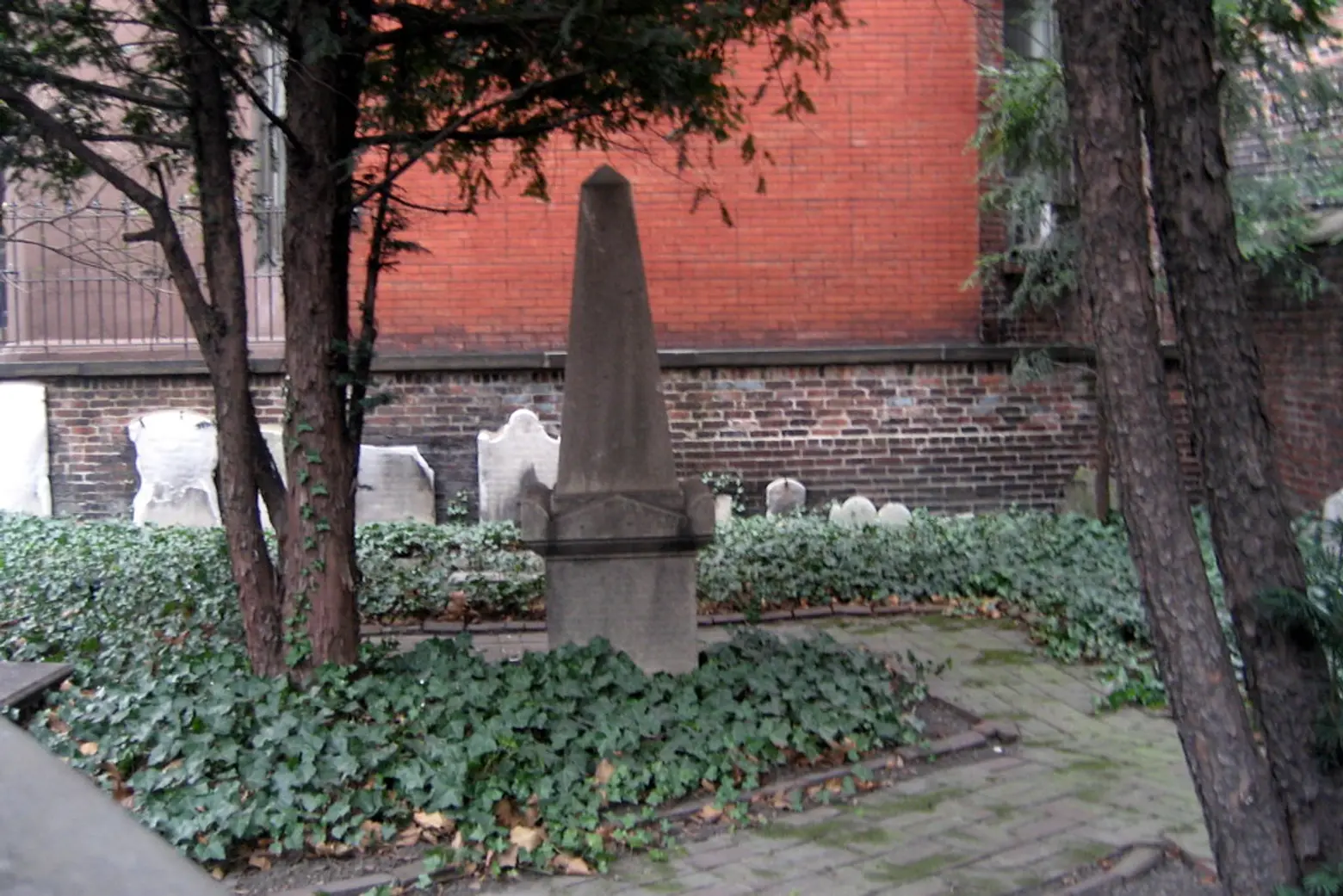 The Second Cemetery of Shearith Israel, via Wally Gobetz/Flickr
The Second Cemetery of Shearith Israel, via Wally Gobetz/Flickr
The “First” cemetery almost suffered the same fate as the real first cemetery of Shearith Israel, as it was greatly reduced in size several times, including for widening of the Bowery, and its land taken by the City by eminent domain. Many of those bodies were then reinterred in what is now known as the Second Cemetery of Shearith Israel, located between 5th and 6th Avenues on West 11th Street in Greenwich Village. Established in 1805, this was also then a rural outpost north of the city when the current street grid had not even been laid out. This is why the cemetery sits at an odd diagonal angle to the street, which did not exist when it was established.
In fact, much as at St. James Place, in 1829 the City took part of this cemetery by eminent domain to build today’s West 11th Street. At that point, this cemetery no longer accepted new burials, and those whose final resting place had been taken over by street and sidewalk were reinterred at the Third (and also still extant) Cemetery of Shearith Israel, located on 21st Street west of 6th Avenue. Unlike the other two cemeteries, the third was never truncated, taking its last burial in 1851. In 1897, the congregation moved into a new building at Central Park West and 70th Street, where it remains today.
RELATED:
- Ten secrets of the Eldridge Street Synagogue
- 15 things you didn’t know about the East Village
- Mapping the Evolution of the Lower East Side Through a Jewish Lens, 1880-2014
+++
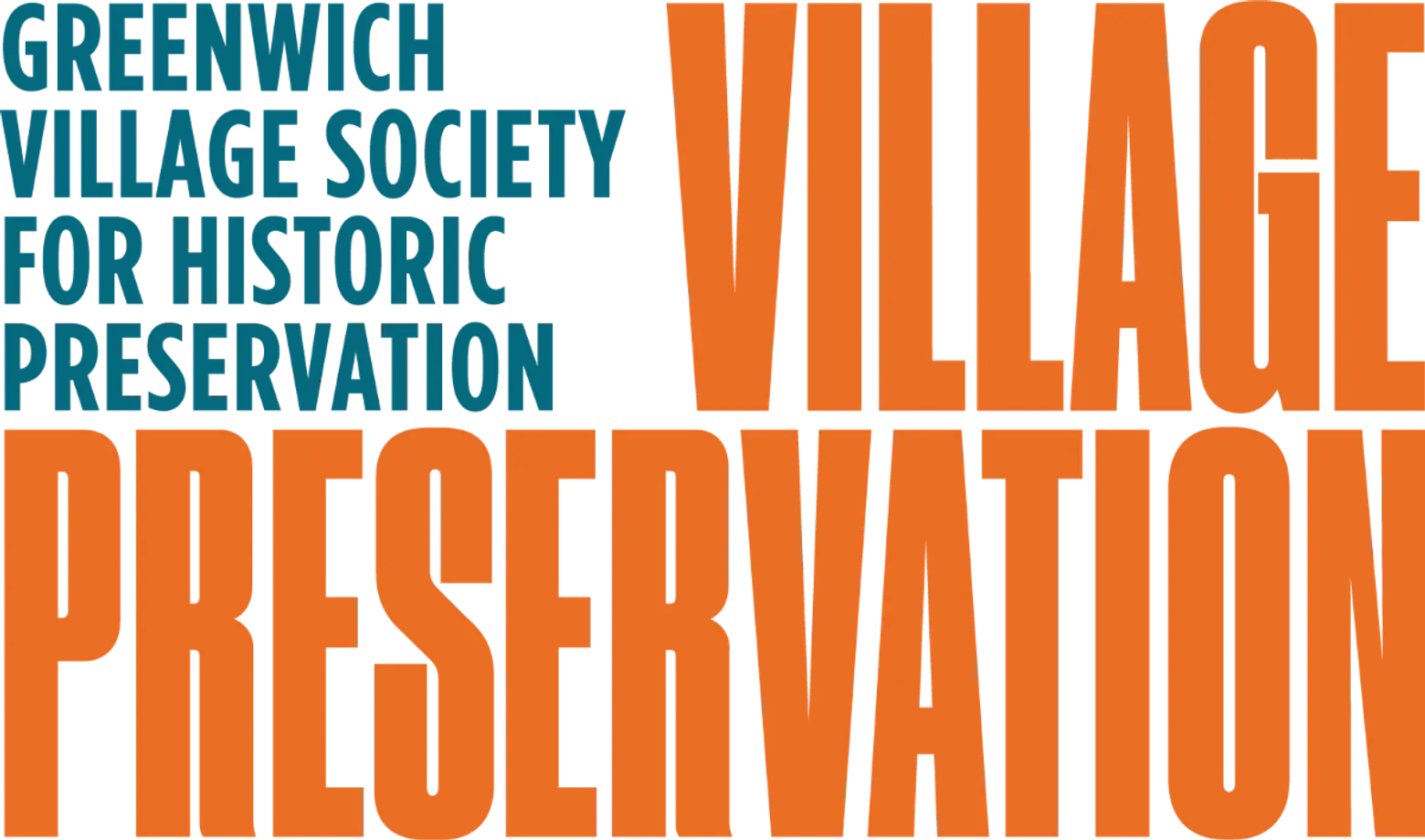
This post comes from Village Preservation. Since 1980, Village Preservation has been the community’s leading advocate for preserving the cultural and architectural heritage of Greenwich Village, the East Village, and Noho, working to prevent inappropriate development, expand landmark protection, and create programming for adults and children that promotes these neighborhoods’ unique historic features. Read more history pieces on their blog Off the Grid
